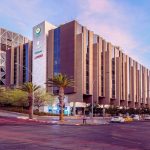The Namibian market share in live cattle exports to South Africa is in free fall as Botswana cattle continue to provide price competition to Namibia, the Meat Board of Namibia has said.
Due to relatively cheaper weaner imports from Botswana, South African feedlots have shifted some of their business to neighbouring Botswana.
“The Namibian weaner’s dominance in the South African market has been broken by Botswana cattle exports to South Africa and this threatens Namibian weaner prices and in the long-run may extend to carcass prices through the value chain,” the Board said.
In a report released recently, the Board noted that up to 99.92% percent of all live cattle exported on the hoof in the first quarter of 2022 were marketed to South Africa (28,950 heads out of 28,972 heads) whereas those exported to Botswana accounted for 0.08% (22 heads) of total live exports, respectively.
“Of these live cattle exports, 97.37% were weaners (the general categorization of weaners includes tollies and heifers). Up to 97.39% (28,217 heads) of all live cattle exports were destined for feedlots while the remainder (farming) cattle only constituted2.61% (755 heads). Export approved abattoirs registered an increase of 68.31% by slaughtering15,247 heads of cattle during the first quarter of 2022 in comparison to 9,059 heads of cattle slaughtered during the same period in previous year,” the Board said adding that the beef all-grade average producer carcass price increased from N$48.05/kg in first quarter 2021 to N$60.34/kg in first quarter 2022, representing a 25.58% increase and a commitment by export abattoirs to offer competitive prices.
“Weaner prices reclined during the first quarter of 2022, seeing only a marginal drop of 0.18% from N$41.66/kg in first quarter 2021 to N$41.59/kg in quarter 1 of this year.”
Sheep sector
The sector performed relatively well during the first quarter of 2022 with each month recording higher levels of marketing than in 2021.
“Total sheep marketing during the quarter 1 of 2022 increased by 27.23% in comparison to the same period last year. The major driver of the growth was live exports of sheep which grew by 57.61% during the first quarter of 2022 totalling 87,081 heads in comparison to 55,251 heads in the year 2020. Live exports increased their market share from 65% to 80%at the expense of B&C-class abattoirs whose market share declined from 30% in quarter 1 of 2021 to 15% in 2022,” the Board said.
On the other hand, export abattoirs maintained their 5% market share.
“Although export abattoirs increased slaughtering by 24.96%, they are operating at only 6% of their slaughter capacity which threatens their existence and Namibia’s ability to revive the export oriented sector’s value addition ideals. Price differences in the A2 grade between Namibia and Northern Cape abattoirs remain above the nominal -N$4.98/ kg level having averaged at -N$5.27/kg by the end of the first quarter which is higher than -N$4.77/kg recorded last year. Namibian A2 sheep prices during the quarter averaged N$76.45/kg while Northern Cape A2 producer prices for the quarter stood at N$81.72/kg,” said the Board.
Pork sector
The pork sector posted a negative performance during the first quarter of 2022 in comparison to the same period last year. The Pork Market Share Promotion Scheme continues to be implemented to assist local producers with market access given cheap pork imports from elsewhere. During the first quarter of 2022, a total of 10,914pigs were slaughtered by Meat Board-registered abattoirs, a 1.87% decline compared to a kill of 11,122pigs slaughtered in 2021.
“However, pork production at 1,028 tons in 2022 was still 7% higher than the 2021 level of 961 tons, a sign of improved productivity reflected in better slaughter mass. Local pork production serviced 48% of the Namibian consumption requirements during the first quarter of 2022 (Q1 2021: 50%), while imports (excluding processed meat) catered for 52% of consumption requirements (Q1 2021: 50%).
“During the first quarter of 2022, a total of 1,118 tons of pork excluding processed pork were imported into the Namibian market. Considering processed pork, total imports amounted to 1,563 tons. The average Namibian pork ceiling price for the first quarter of 2022stood at N$35.24/ kg, down by 10.75% (or N$4.25/kg) from N$39.48/kg observed during the first quarter of 2021,” said the Board further stating that the Meat Board revised the Pork Ceiling Price calculations in March 2022 to absorb monthly changes in transport cost in order to ensure that producers are not made worse-off by fuel price increases.
“The transport cost is computed based on a model developed by the Meat Board.”










